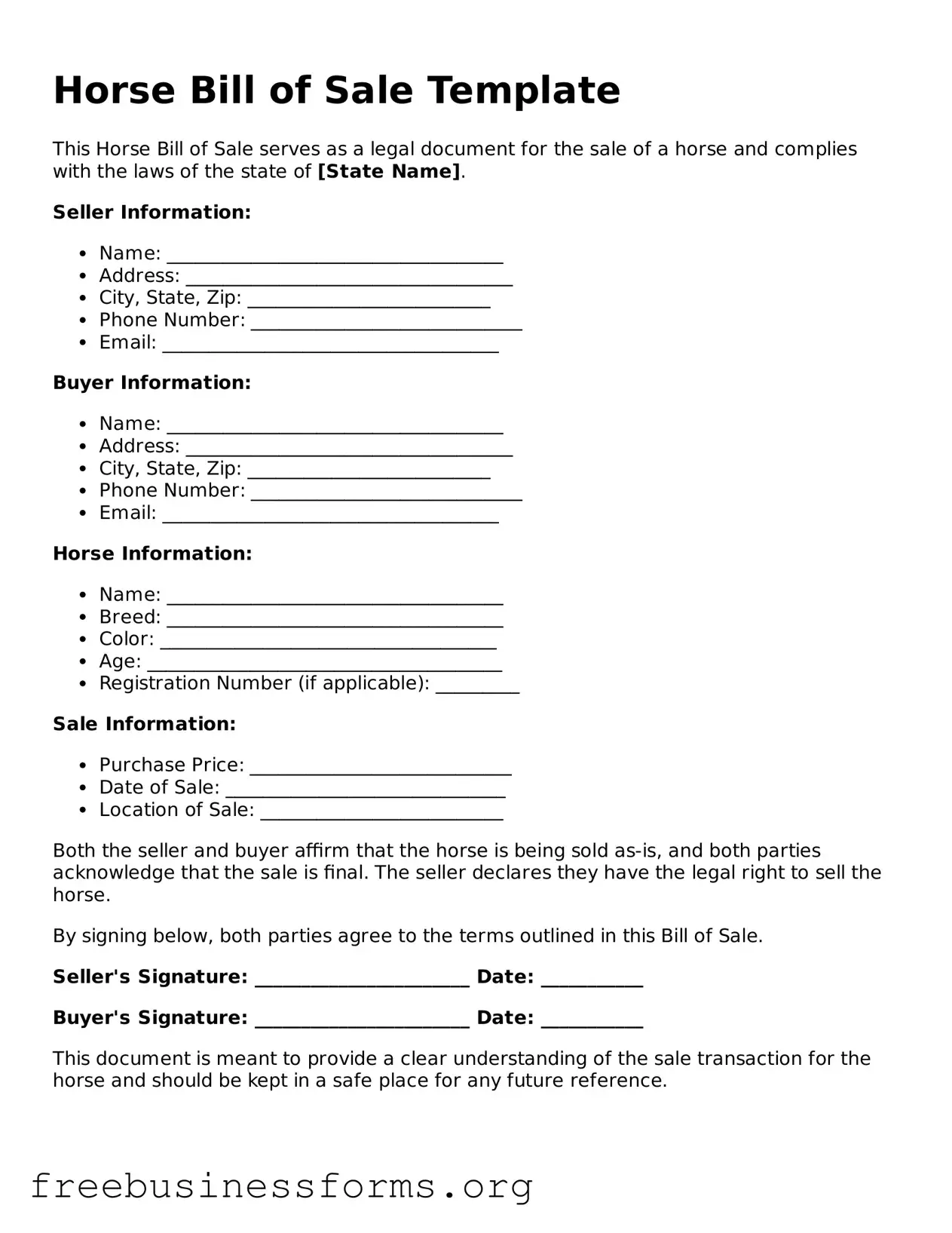Horse Bill of Sale Template
This Horse Bill of Sale serves as a legal document for the sale of a horse and complies with the laws of the state of [State Name].
Seller Information:
- Name: ____________________________________
- Address: ___________________________________
- City, State, Zip: __________________________
- Phone Number: _____________________________
- Email: ____________________________________
Buyer Information:
- Name: ____________________________________
- Address: ___________________________________
- City, State, Zip: __________________________
- Phone Number: _____________________________
- Email: ____________________________________
Horse Information:
- Name: ____________________________________
- Breed: ____________________________________
- Color: ____________________________________
- Age: ______________________________________
- Registration Number (if applicable): _________
Sale Information:
- Purchase Price: ____________________________
- Date of Sale: ______________________________
- Location of Sale: __________________________
Both the seller and buyer affirm that the horse is being sold as-is, and both parties acknowledge that the sale is final. The seller declares they have the legal right to sell the horse.
By signing below, both parties agree to the terms outlined in this Bill of Sale.
Seller's Signature: _______________________ Date: ___________
Buyer's Signature: _______________________ Date: ___________
This document is meant to provide a clear understanding of the sale transaction for the horse and should be kept in a safe place for any future reference.
